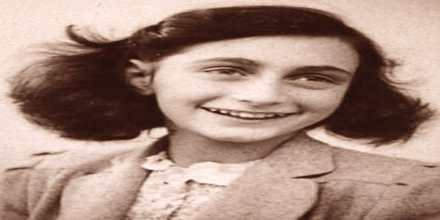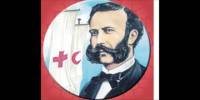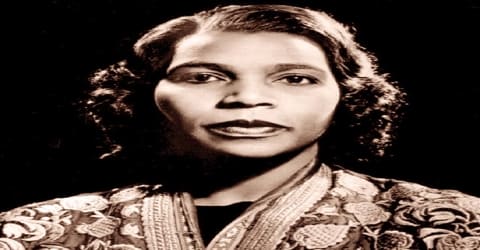Anne Frank – Writer (1929-1945)
Full Name: Annelies Marie Frank
Date of Birth: 12 June 1929
Place of Birth: Frankfurt, Germany
Date of Death: February or March 1945 (aged 15)
Place of Death: Bergen-Belsen concentration camp, Lower Saxony, Germany
Occupation: Diarist, Writer
Language: Dutch
Nationality: German until 1941
Stateless from 1941
Early Life

Annelies Marie Frank was born on 12 June 1929, in Frankfurt, Germany. She was a German-born diarist and writer.
For people all over the world, Anne Frank, the vivacious, intelligent Jewish girl with a crooked smile and huge dark eyes, has become the “human face of the Holocaust.” Her diary of twenty-five months in hiding, a precious record of her struggle to keep hope alive through the darkest days of this century, has touched the hearts of millions.
Anne Frank lived in Amsterdam with her family during World War II. Fleeing Nazi persecution of Jews, the family went into hiding for two years; during this time, Frank wrote about her experiences and wishes. She was 15 when the family was found and sent to the camps, where she died.
One of the most discussed Jewish victims of the Holocaust, she gained fame posthumously following the publication of her diary, The Diary of a Young Girl (originally Het Achterhuis; English: The Secret Annex), which documents her life in hiding from 1942 to 1944, during the German occupation of the Netherlands in World War II. It is one of the world’s most widely known books and has been the basis for several plays and films.
By May 1940, the Franks were trapped in Amsterdam by the German occupation of the Netherlands. As persecutions of the Jewish population increased in July 1942, the family went into hiding in some concealed rooms behind a bookcase in the building where Anne’s father worked. From then until the family’s arrest by the Gestapo in August 1944, Anne kept a diary she had received as a birthday present, and wrote in it regularly. Following their arrest, the Franks were transported to concentration camps. In October or November 1944, Anne and her sister, Margot, were transferred to Bergen-Belsen concentration camp from Auschwitz, where they died (probably of typhus) a few months later. They were originally estimated by the Red Cross to have died in March, with Dutch authorities setting 31 March as their official date of death, but research by the Anne Frank House in 2015 suggests they more likely died in February.
Frank’s father, Otto, the only survivor of the family, returned to Amsterdam after the war to find that her diary had been saved by one of the helpers, Miep Gies, and his efforts led to its publication in 1947. It was translated from its original Dutch version and first published in English in 1952 as The Diary of a Young Girl, and has since been translated into over 60 languages.
Educational and Childhood Career

Frank was born Annelies or Anneliese Marie Frank on 12 June 1929 at the Maingau Red Cross Clinic in Frankfurt, Germany, to Edith and Otto Heinrich Frank. After moving to Amsterdam, Anne and Margot Frank were enrolled in school—Margot in public school and Anne in a Montessori school. Margot demonstrated ability in arithmetic, and Anne showed aptitude for reading and writing. Anne’s friend, Hanneli Goslar, later recalled that from early childhood, Frank frequently wrote, although she shielded her work with her hands and refused to discuss the content of her writing.
The Frank sisters were excelling in their studies and had many friends, but with the introduction of a decree that Jews could attend only Jewish schools, they were enrolled at the Jewish Lyceum. Anne became a friend of Jacqueline van Maarsen in the Lyceum.
 (Anne Frank and Margot Frank)
(Anne Frank and Margot Frank)
For her thirteenth birthday on 12 June 1942, Frank received a book she had shown her father in a shop window a few days earlier.
In her entry dated 20 June 1942, she lists many of the restrictions placed upon the lives of the Dutch Jewish population.
Writing Career
On June 12, 1942, Frank’s parents gave her a red checkered diary for her 13th birthday. She wrote her first entry, addressed to an imaginary friend named Kitty, that same day: “I hope I will be able to confide everything to you, as I have never been able to confide in anyone, and I hope you will be a great source of comfort and support.”

Weeks later, on July 5, 1942, Margot received an official summons to report to a Nazi work camp in Germany. The very next day, the family went into hiding in makeshift quarters in an empty space at the back of Otto Frank’s company building, which they referred to as the Secret Annex. They were accompanied in hiding by Otto’s business partner Hermann van Pels as well as his wife, Auguste, and son, Peter. Otto’s employees Kleiman and Kugler, as well as Jan and Miep Gies and Bep Voskuijl, provided food and information about the outside world.
Initially Anne found living in hiding an adventure and wrote about it excitedly in her diary. She also developed a romance with Peter van Pels during this time which she mentioned in her writings.
Since the family was not allowed to go outside, she spent most of the time reading and writing. Her diary became her closest confidante and she wrote in detail about her relationships with each of her family members.
As time wore by, Anne lost her youthful optimism and began to grow weary of the confinement. However, she did not lose hope that life would one day return to normal and she would go back to school. She mentioned in her diary that she wanted to be a writer one day.
To pass the time, Frank wrote extensive daily entries in her diary. Some betrayed the depth of despair into which she occasionally sunk during day after day of confinement. “I’ve reached the point where I hardly care whether I live or die,” she wrote on February 3, 1944. “The world will keep on turning without me, and I can’t do anything to change events anyway.” However, the act of writing allowed Frank to maintain her sanity and her spirits. “When I write, I can shake off all my cares,” she wrote on April 5, 1944.
The Jewish families were betrayed by an informer in 1944. Their hiding place was discovered in August and the Franks, van Pelses, and Pfeffer were arrested and interrogated. Having been arrested in hiding, they were considered criminals.
They were transferred to the Auschwitz death camp in Poland in the middle of the night on September 3, 1944. Upon arriving at Auschwitz, the men and women were separated. This was the last time that Otto Frank ever saw his wife or daughters.
After some time, Anne and Margot were separated from their mother, who later died, and moved to the Bergen-Belsen concentration camp where the conditions were even worse with scarcity of food and lack of sanitation facilities.
At Bergen-Belsen, food was scarce, sanitation was awful and disease ran rampant. Frank and her sister both came down with typhus in the early spring and died within a day of each other sometime in March 1945, only a few weeks before British soldiers liberated the camp. Anne Frank was just 15 years old at the time of her death, one of more than 1 million Jewish children who died in the Holocaust.

Otto Frank was the only member of his immediate family to survive. When Otto returned to Amsterdam, he found Anne’s diary, which had been saved by Miep Gies.
Otto sought to have selections from his daughter’s diary published as a book, and The Secret Annex: Diary Letters from June 14, 1942 to August 1, 1944 was published on June 25, 1947. “If she had been here, Anne would have been so proud,” he said. The Diary of a Young Girl, as it’s typically called in English, has since been published in 67 languages.
Frank’s diary is essentially a story of faith, hope and love in the face of hate. “It’s utterly impossible for me to build my life on a foundation of chaos, suffering and death,” she wrote on July 15, 1944. “I see the world being slowly transformed into a wilderness; I hear the approaching thunder that, one day, will destroy us too. I feel the suffering of millions. And yet, when I look up at the sky, I somehow feel that everything will change for the better, that this cruelty too shall end, that peace and tranquility will return once more.”
Personal Life
Frank was born Annelies or Anneliese Marie Frank on 12 June 1929 at the Maingau Red Cross Clinic in Frankfurt, Germany, to Edith and Otto Heinrich Frank. She had an older sister, Margot. The Franks were liberal Jews, and did not observe all of the customs and traditions of Judaism. They lived in an assimilated community of Jewish and non-Jewish citizens of various religions.
At the time of Anne’s birth the family lived in a house at Marbachweg 307, where they rented two floors. In 1931 the family moved to Ganghoferstrasse 24 in a fashionable liberal area called the Dichterviertel (Poets’ Quarter). Both houses still exist.
In 1933, after Adolf Hitler’s Nazi Party won the federal election, Edith Frank and the children went to stay with Edith’s mother, Rosa, in Aachen.
By February 1934, Edith and the children had joined him (Otto) in Amsterdam.
Born in Frankfurt, Germany, she lived most of her life in or near Amsterdam, Netherlands, having moved there with her family at the age of four-and-a-half when the Nazis gained control over Germany.
Death

At Bergen-Belsen, food was scarce, sanitation was awful and disease ran rampant. A typhus epidemic spread through the camp in 1945 and other diseases like typhoid fever were also widespread. Though it is not known what exactly afflicted the Frank sisters, it is believed that both Margot and Anne became ill and died sometime in February or March 1945.
Honours
 (Statue of Anne Frank, by Mari Andriessen, outside the Westerkerk in Amsterdam)
(Statue of Anne Frank, by Mari Andriessen, outside the Westerkerk in Amsterdam)
On 3 May 1957, a group of citizens, including Otto Frank, established the Anne Frank Stichting in an effort to rescue the Prinsengracht building from demolition and to make it accessible to the public.
In 1997, the Anne Frank Educational Centre (Jugendbegegnungsstätte Anne Frank) was opened in the Dornbusch neighbourhood of Frankfurt, where Frank lived with her family until 1934. The Centre is “a place where both young people and adults can learn about the history of National Socialism and discuss its relevance to today.”
In 2009, the Anne Frank Center USA launched a national initiative called the Sapling Project, planting saplings from a 170-year-old chestnut tree that Anne had long loved (as denoted in her diary) at 11 different sites nationwide. In more recent news, the Anne Frank House lost a lawsuit to the Anne Frank Fonds in June 2013, after the Fonds sued the House for the return of documents linked to Anne and Otto Frank.
In November 2007, the Anne Frank tree—by then infected with a fungal disease affecting the tree trunk—was scheduled to be cut down to prevent it from falling on the surrounding buildings. Dutch economist Arnold Heertje said about the tree: “This is not just any tree. The Anne Frank tree is bound up with the persecution of the Jews.”
















